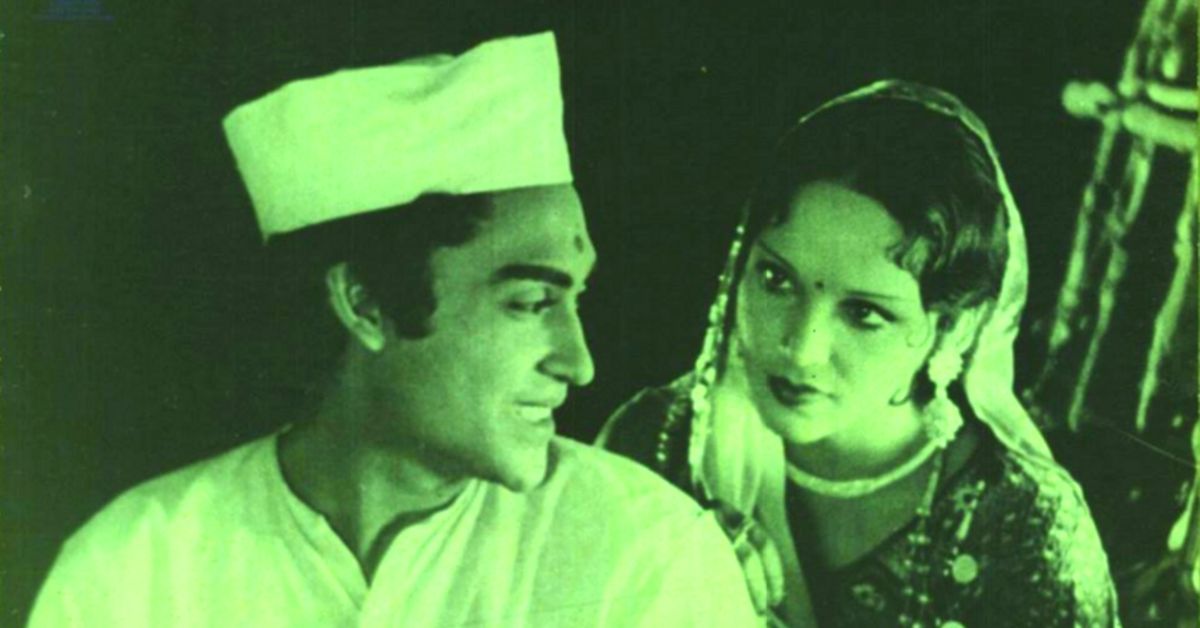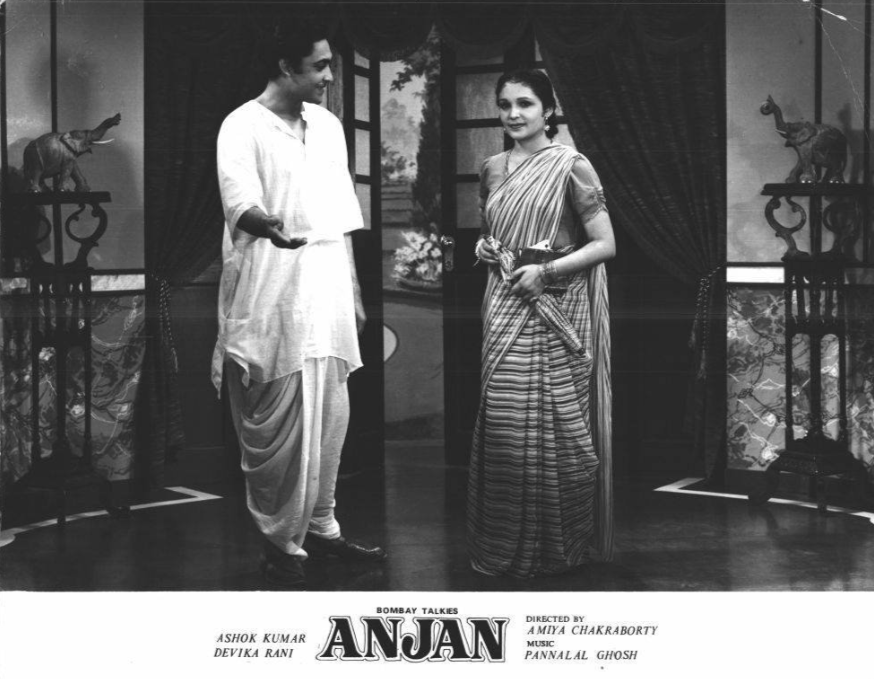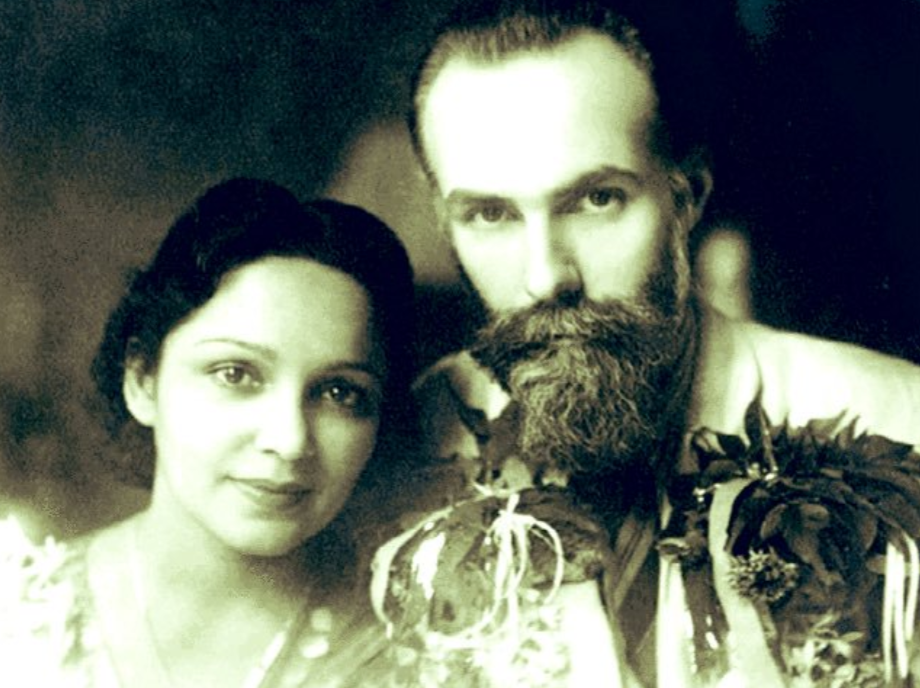Bollywood’s First Empress: Before Madhubala & Nargis, India had Devika Rani
A pioneer in the truest sense, Devika Rani walked a path that few women in Indian cinema have managed to. In fact, she was the one who gave a young Dilip Kumar his first major break! #FirstWomen #Cinema

Before Madhubala, Nargis, and Meena Kumari, there was Devika Rani, a star actor and film producer, who co-founded Bombay Talkies, India’s first self-contained film studio, alongside her first husband Himanshu Rai in 1934, and later became its sole boss after Rai’s untimely death.
She donned these roles at a time when the very concept of working women wasn’t celebrated with fanfare in mainstream society.
Looking to relax after a long day at work? Unwind with this organic, eco-friendly lavender soap, which exfoliates your skin, and leaves it soft and plump.
A pioneer in the truest sense, Devika played a fundamental role in bringing Indian cinema to the world. She acted in 15 movies in 10 years, and headed Bombay Talkies for 5 years, before abruptly quitting the film business altogether in 1945 following a business dispute, according to this Indian Express profile.

Born on March 30, 1908, Rani grew up in affluence. Her father, Manmathanath Chaudhuri, was the first Indian surgeon-general of Madras Presidency, and Rabindranath Tagore was her granduncle.
Sent to a private school in London, she earned a scholarship from the Royal Academy of Dramatic Arts in the United Kingdom to pursue her dreams of acting at the age of 16.
In addition to acting, she also studied textile design, décor and architecture. She met her first husband Himanshu Rai in 1928 while assisting with costume design and art direction for his experimental silent film ‘A Throw of Dice’ in 1929.
Rai was 16 years her senior, but the fact hardly bothered Rani, and the couple wed the same year. Soon, they shifted base to Berlin, where they worked at the UFA studios, a once-legendary German motion-picture production company, where Rani received training in several aspects of filmmaking under various luminaries like director GW Pabst and Eric Pommer.
“I first entered as an ordinary worker and was an apprentice in the make-up, costume and sets departments. I worked under their most famous make-up man. And yet, after two years of intensive general training and tests, you were asked to forget it all, because you had become too mechanical! You were asked to become yourself,” she said in an interview to Filmfare after receiving the first Dadasaheb Phalke Award in 1958.

Rani eventually made her on-screen debut in 1933 alongside Rai in his bilingual film, Karma.
The film was premiered in England and received excellent reviews with Rani’s performance coming in for special mention. The movie was particularly known for its nearly four-minute-long kissing scene between Rani and Rai, which unfortunately did not endear Indian audiences when it was re-released in India as Nagin Ki Ragini the following year.
However, it did not stop them from setting up Bombay Talkies the same year on an 18-acre plot in Malad, Mumbai, alongside Bengali screenwriter Niranjan Pal. The studio released its first film Jawani Ki Hawa (1935), a crime thriller, starring Rani and Najm-ul-Hassan.
But it was during the shooting for the next film Jeevan Naiya when the relationship between Rai and Rani fell apart with the latter eloping with Najm-ul-Hassan.
Sashadhar Mukherjee, an assistant sound-engineer, helped the couple come to a truce which held among other things that Rani would have sole control of her finances and the firing of Najm-ul-Hassan from the studio.
For the remainder of the film, Mukherjee’s brother-in-law, the legendary Ashok Kumar, who was a laboratory assistant at the time, was hired and cast opposite Rani. The following year, the Rani and Ashok Kumar were paired together in Achhut Kanya (1936), portraying the roles of an untouchable girl and Brahmin boy who fall in love.

It was a remarkable film for its time, depicting the caste system in all its ugliness. The pair would go onto act in nearly ten films that were largely based on strong women characters with a heavy dose of social realism.
The reputation of Bombay Talkies as India’s premier film studio was largely down to Rani’s charismatic performances on-screen and her ability to pitch these films to financiers.
In 1940, Rai died after a “nervous breakdown,” and subsequently, the board of directors at Bombay Talkies selected Rani to take up the top job and run the studio.
In the following five years, the studio produced hits like Naya Sansar (1941) and Kismet (1943), a noir film and “one of the early blockbusters of Indian cinema” which ran for three straight years at Kolkata’s Roxy theatre.
Rani also gave Dilip Kumar his first major break in the film industry with Jwar Bhata (1944), casting him as the lead.
Despite her success, the film industry was an arena dominated by men where sexism reigned supreme. In 1943, Mukherjee led an exodus of talent from Bombay Talkies, which included among other people, Ashok Kumar, to establish Filmistan.
After a string of films which failed to break the bank, the knives were out for her exit. Instead of suffering the indignity of being ousted, she resigned herself and quit the business altogether. Suffice to say, Bombay Talkies never recovered from her resignation.

Devika Rani with her husband Svetoslav Roerich (Source: FilmHistoryPic/Twitter)
She would go onto marry Russian painter Svetoslav Roerich, the son of legendary Russian artist Nicholas Roerich, and move to an estate in the Kullu Valley, Himachal Pradesh, before retiring altogether at the 468-acre Tataguni Estate on the outskirts of Bengaluru.
She passed away on March 9, 1994, in Bengaluru.
In a world where women would endure several hard knocks for even contemplating these measures in the film industry, Devika Rani walked a path that few women in Indian cinema have managed to, and showed them what it means to take ownership of their craft and finances.
Also Read: Sahir Ludhianvi, The Poet of Peace Whose Lyrics Made a Home in People’s Hearts
(Edited by Gayatri Mishra)
Like this story? Or have something to share? Write to us: [email protected], or connect with us on Facebook and Twitter.
If you found our stories insightful, informative, or even just enjoyable, we invite you to consider making a voluntary payment to support the work we do at The Better India. Your contribution helps us continue producing quality content that educates, inspires, and drives positive change.
Choose one of the payment options below for your contribution-
By paying for the stories you value, you directly contribute to sustaining our efforts focused on making a difference in the world. Together, let’s ensure that impactful stories continue to be told and shared, enriching lives and communities alike.
Thank you for your support. Here are some frequently asked questions you might find helpful to know why you are contributing?


This story made me
-
97
-
121
-
89
-
167













